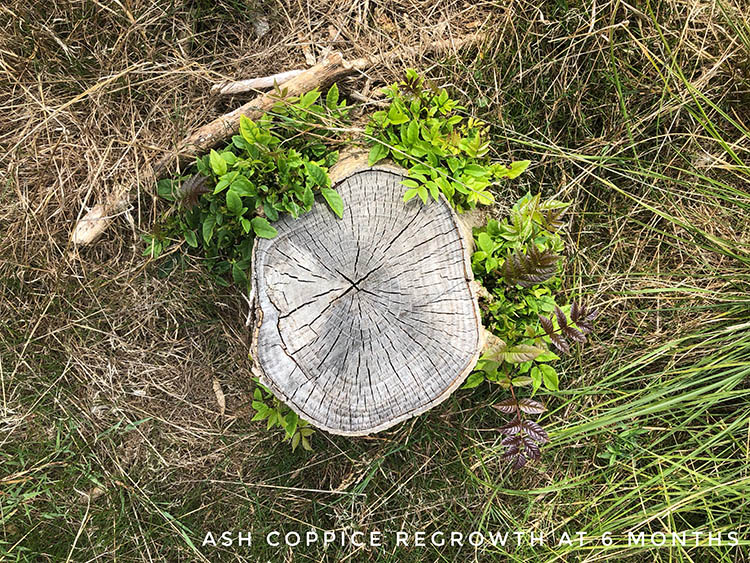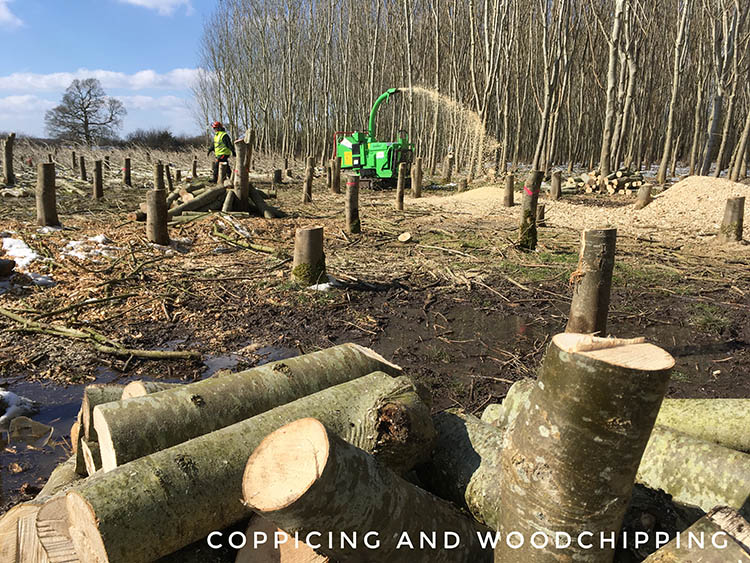
Woodlands require woodland management for their sustainability and to produce the best possible habitats for wildlife.
We can create new woodland habitats or we offer the following services for establishing or managing existing woodlands:
Coppicing
Coppicing is a very traditional woodland management technique. It involves cutting a tree near to its base to encourage new growth.
We undertake both coppicing of new woodlands after 7–10 years or we can bring older established woodland areas under a coppicing regime. This is best achieved on a rotational basis. Rotation creates a healthy woodland of varying age and canopy height. This habitat mosaic effect is best for wildlife and encourages a bio-diverse environment.
Our ecologically led team can maximise biodiversity gain by enhancing ground flora once coppicing is complete with the addition of native wildflower bulb planting. We recommend planting species such as Lesser Celandine, Bluebell and Wild Daffodil. Our ecologically trained team are happy to advise options based on your site conditions.

Sapling removal
Get rid of woody growth without chemicals! Sapling removal is beneficial for both woodland management and meadow grassland management.
We offer a traditional cut and treat with herbicide control method or for a more environmentally friendly approach we operate a tree popper.
The tree popper is a mechanical device that pulls the whole plant, root and all on saplings and invasive woody species. It is particularly useful for sites where livestock or wildlife are at risk of grazing on chemically treated stumps. Removal of woody species is essential when establishing wildflower areas.
Woodland Thinning
Thinning is essential to bring a woodland back into management where land use changes have caused deterioration or monoculture of available habitats.
Our NPTC licensed operatives are guided by their ecology background. Selecting trees for felling with the aim of reducing competition for light, water and nutrients and opening up the canopy for wildlife benefits and colonisation of ground flora.
Woodland thinning encourages stronger, healthier trees. Particularly important when incorporating existing woodland habitat into public open space within new residential developments.
Woodchipping

Our team hold all the necessary competencies to undertake processing of felled timber and tidy ups of wooded areas and scrub. We can chip in situ or remove off-site, with options for sensitive ‘off ground’ works where protected species are present.
We offer a range of habitat creation services for woodland settings. Find out more about our standing deadwood, habitat piles and planting services here.